Atomic Power and Other Nuclear Matters
Dr. Lapp’s Sperm Bank
1957: Atomic physicist Ralph Lapp urged that the government should start stockpiling human sperm in lead-lined containers for use following a nuclear war.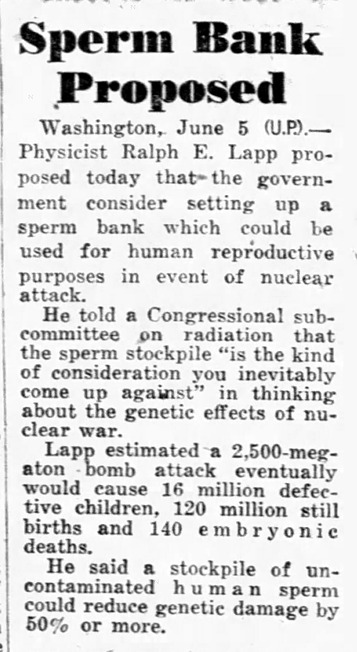
New York Daily News - June 6, 1957
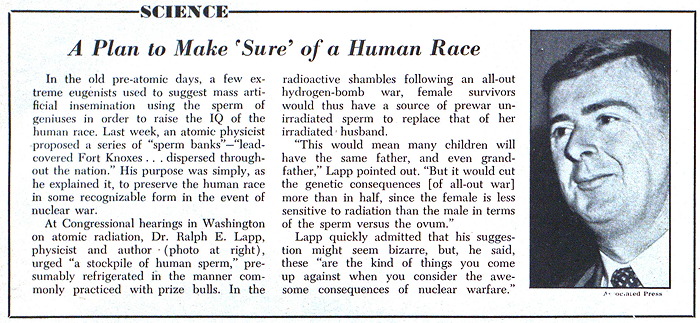
Newsweek - June 17, 1957
Posted By: Alex - Tue Jan 15, 2019 -
Comments (4)
Category: Atomic Power and Other Nuclear Matters, 1950s
Multipurpose Fallout Shelter
•Carport
•Patio
•Play Room
•Hobby Room
•Fallout Shelter
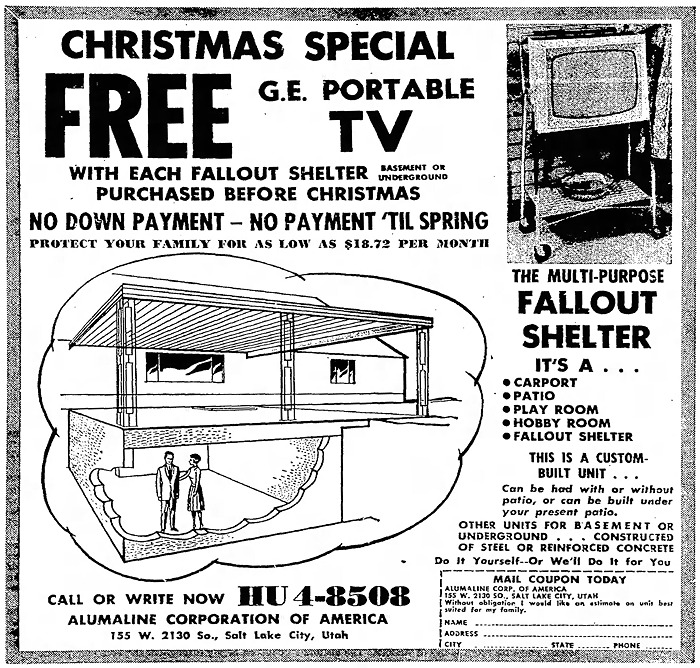
Salt Lake Tribune - Dec 17, 1961
Posted By: Alex - Sun Apr 15, 2018 -
Comments (3)
Category: Atomic Power and Other Nuclear Matters, 1960s
8 tons of fallout biscuits
A follow-up to my post yesterday about the invention of 'fallout biscuits' in 1961.In 1971, eight tons of these biscuits, or crackers, caused the floor to collapse at the South Carolina State House:
"We know there were some crackers back there," Brooks said, "but who would have thought there were eight tons of them."
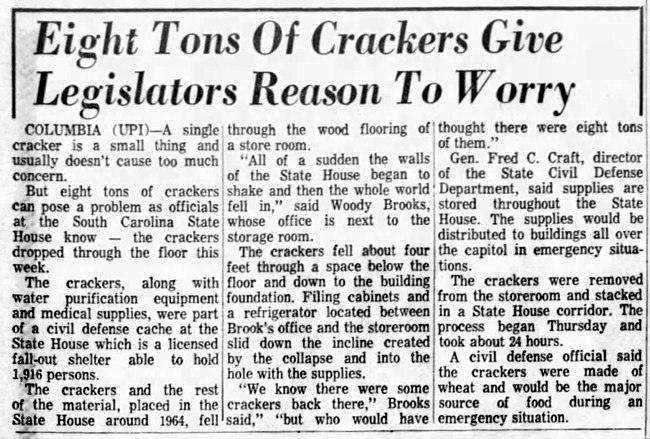
The Greenville News - July 11, 1971
Posted By: Alex - Thu Jan 18, 2018 -
Comments (2)
Category: Food, Atomic Power and Other Nuclear Matters, 1970s
Fallout Biscuits
Back in 1961, the U.S. Office of Civil Defense came out with 'fallout biscuits.' They were vitaminized crackers. The idea was that people in fallout shelters could live on these for weeks, or even years, if necessary. The biscuits were cheap to make and lasted pretty much forever, so huge quantities were prepared.Fast-forward to the twenty-first century. The various places wheres the biscuits were stored, such as the University of Montana, now faced the problem of how to get rid of the thousands of boxes of these things.
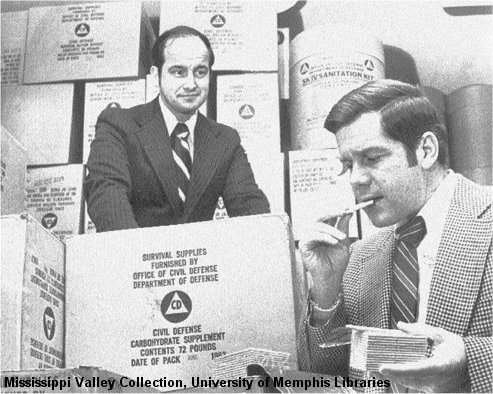
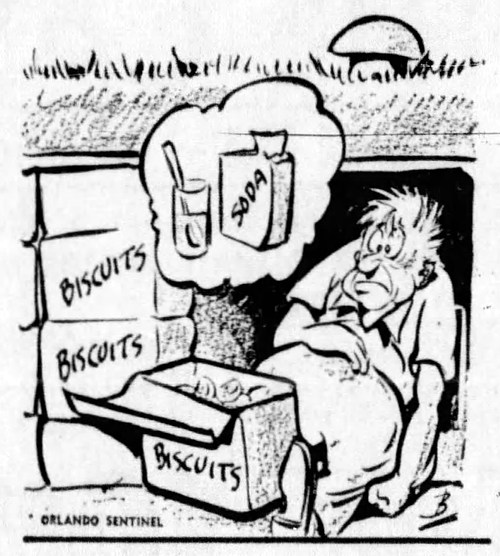
Orlando Sentinel - Jun 2, 1961
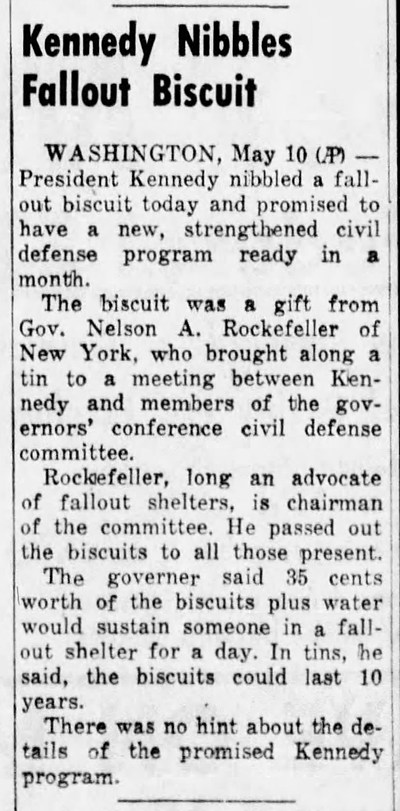
Fort Myers News-Press - May 11, 1961
Posted By: Alex - Wed Jan 17, 2018 -
Comments (4)
Category: Food, Atomic Power and Other Nuclear Matters, 1960s
Atomic Protection Fashion
"how the housewife of the future might do her shopping during danger of atomic attack. The ensemble consists of a hood and goggles for protection against atomic flashes, a cloak and a gas mask to protect the lungs from atomic dust."Because not even the threat of nuclear war is going to stop the weekly shop!
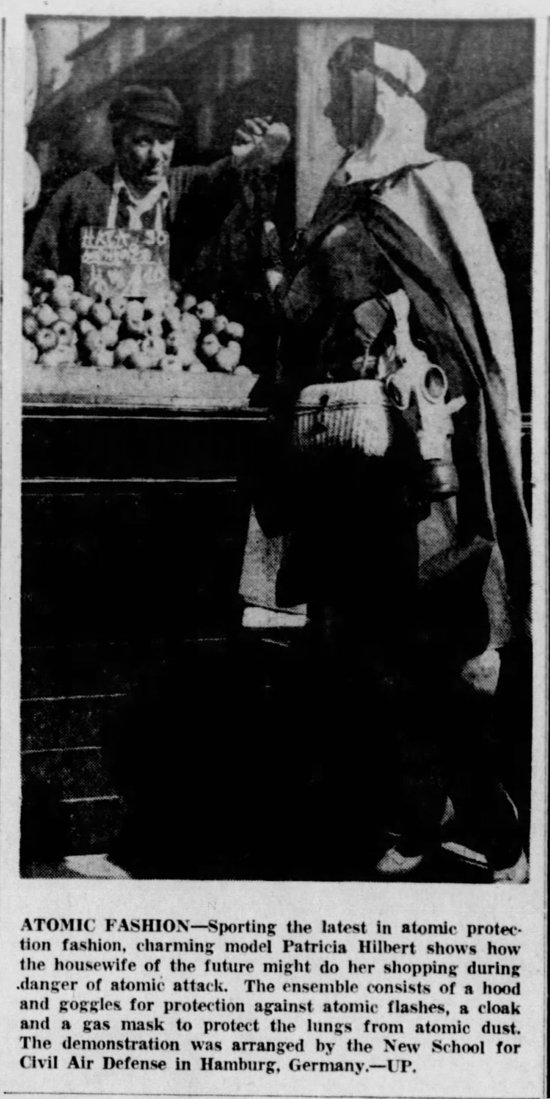
Akron Beacon Journal - May 7, 1957
Posted By: Alex - Thu Dec 07, 2017 -
Comments (6)
Category: Fashion, Atomic Power and Other Nuclear Matters, 1950s
Atomic Hairdos
How the atomic bomb inspired hairdressers.
La Grande Observer - July 30, 1946


(AP Wirephoto — Mar 2, 1951)
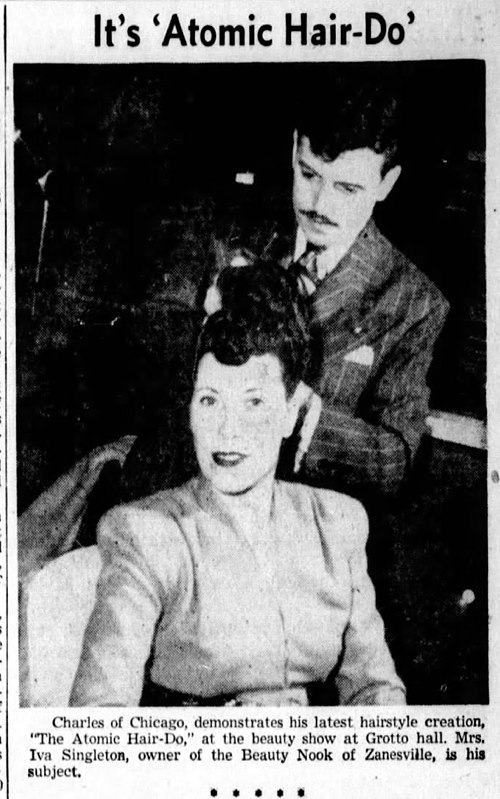
Mansfield News-Journal - Apr 29, 1946
Posted By: Alex - Fri Nov 24, 2017 -
Comments (1)
Category: Atomic Power and Other Nuclear Matters, 1940s, 1950s, Hair and Hairstyling
Sun bathing at Bikini again
You get a killer tan, even at night.The original residents of Bikini were never able to return.
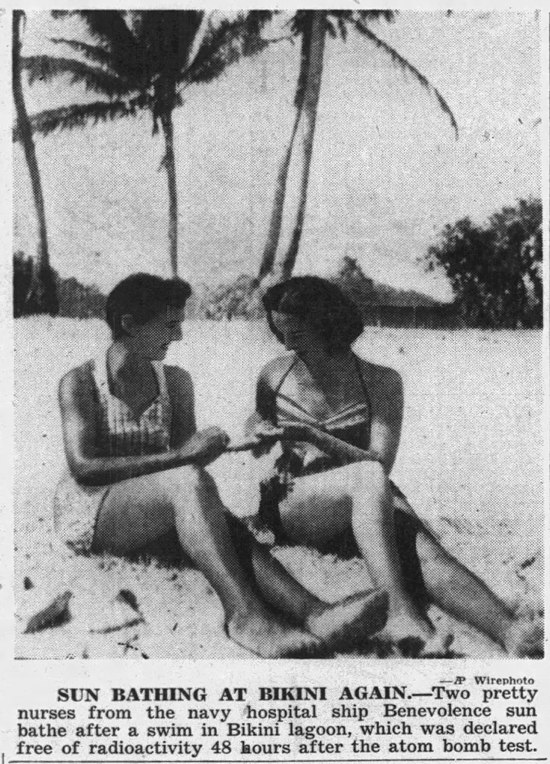
The Miami News - July 3, 1946
Update: Found a better quality copy of the picture. (source)
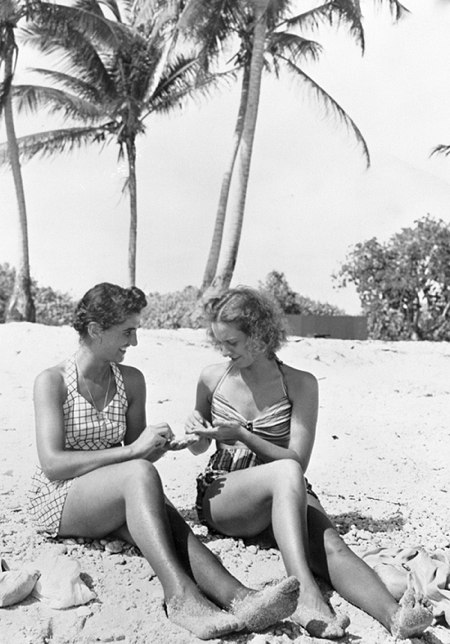
Posted By: Alex - Sat Aug 26, 2017 -
Comments (2)
Category: Atomic Power and Other Nuclear Matters, 1940s
Hair Care During Nuclear Attack
Prompted by the recent threats from North Korea, Guam's Office of Civil Defense recently issued guidelines on what people should do in the event of a nuclear emergency. It included the advice that you should wash your hair with shampoo or soap. However, you shouldn't use conditioner "because it will bind radioactive material to your hair."Interesting and potentially useful to know.
More info: Guam Civil Defense Fact Sheet, npr.org
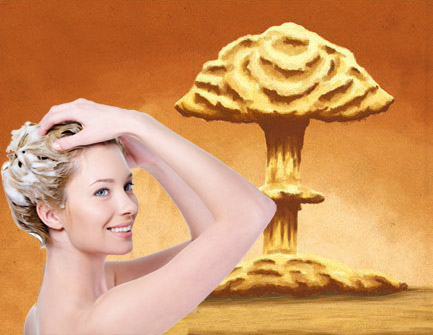

Posted By: Alex - Wed Aug 16, 2017 -
Comments (5)
Category: Atomic Power and Other Nuclear Matters, Baths, Showers and Other Cleansing Methods, Hair and Hairstyling
Atomic Bomb Car
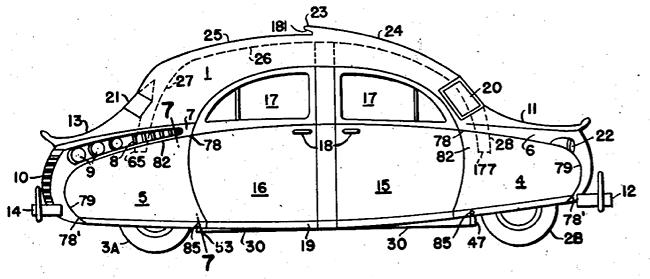
In 1953, Corwin D. Willson of Flint, Michigan patented the Atomic Bomb Car. Though the official title on the patent was a "sedan having versatile structure."
His idea was that if the United States were "atomically attacked," people would need to flee the cities, and then they'd have to live in their cars. But most cars aren't designed to be lived in. The solution: turn cars into mobile bomb shelters that could provide temporary housing for people. Essentially, he was patenting a camper car, but he was trying to market it as a defense against atomic attack.
From the patent:
And also:
More info: JF Ptak Science Books, Patent #US2638374A
Posted By: Alex - Mon Mar 27, 2017 -
Comments (1)
Category: Inventions, Patents, Atomic Power and Other Nuclear Matters, 1950s
Home Radiation Detector
If the crystals are glowing, it's time to get going.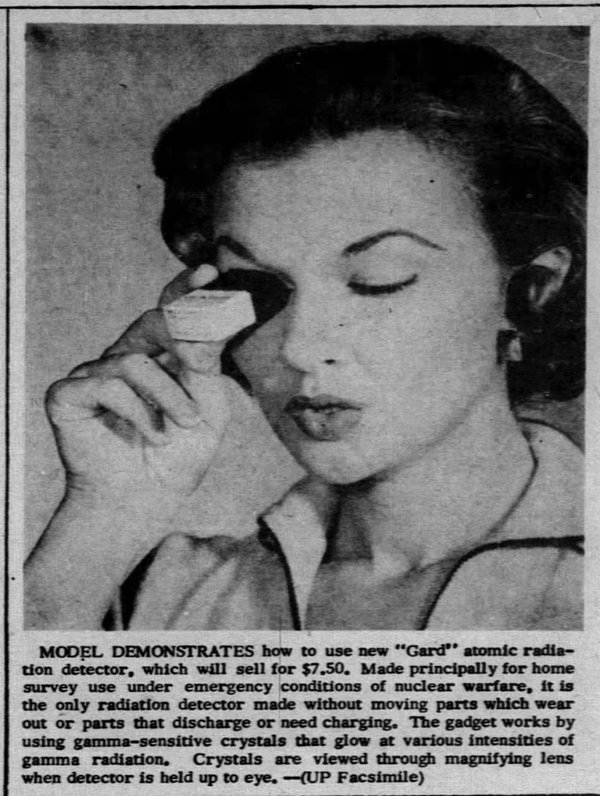
The Opelousas Daily World - Sep 6, 1957
Posted By: Alex - Sun Feb 05, 2017 -
Comments (3)
Category: Atomic Power and Other Nuclear Matters, 1950s

| Who We Are |
|---|
| Alex Boese Alex is the creator and curator of the Museum of Hoaxes. He's also the author of various weird, non-fiction, science-themed books such as Elephants on Acid and Psychedelic Apes. Paul Di Filippo Paul has been paid to put weird ideas into fictional form for over thirty years, in his career as a noted science fiction writer. He has recently begun blogging on many curious topics with three fellow writers at The Inferior 4+1. Contact Us |




